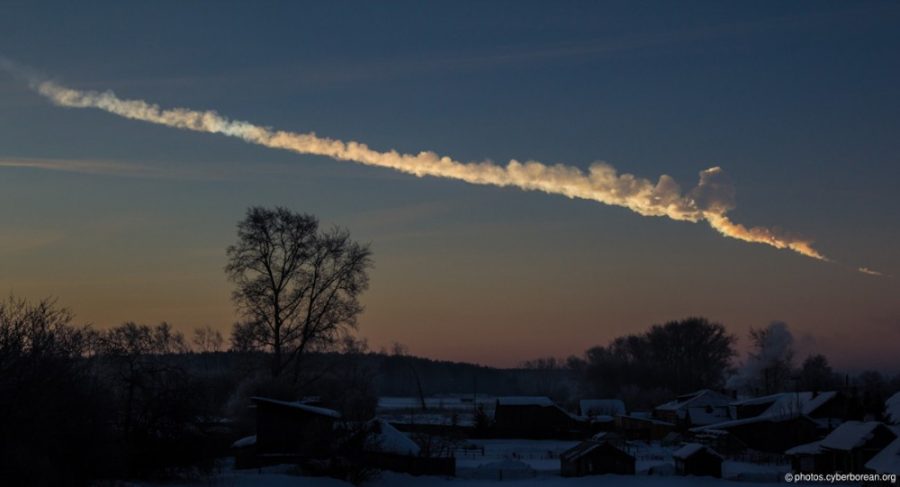April 5 has seen its share of science headlines in the last 200 years. Here are the highlights:
1804: Meteorite impact
The High Possil meteorite fell to Earth and landed in a quarry near High Possil, just north of Glasgow, Scotland.
The High Possil meteorite is one of four meteorites thus far recovered in Scotland. However, this apparent irregularity is perhaps due simply to Scotland’s sparse population.
Despite its unique landing location and extraterrestrial origin, the 5 billion-year-old High Possil meteor was composed of earthly minerals such as feldspar and copper.
Although mankind has been fascinated with space throughout history, this particular meteorite, as well as several other European examples, are thought to mark the beginning of what we call modern meteorite science.
At the beginning of the nineteenth century, scientists began searching for meteorites in earnest and thoroughly studying the composition and materials they were made out of, in order to better understand the composition of the universe.
RELATED: UA researcher observes smallest asteroid
1815: Mt. Tambora eruption
On the evening of April 5, the first of many massive explosions in connection with the volcano Mt. Tambora occurred. The explosions were heard by the villagers on islands up to 870 miles away, in what was then called the Dutch East Indies and is now present-day Indonesia. Tambora was a massive stratovolcano that had been dormant for several hundred years before the eruption.

Stratovolcanos are characterized by steep sloping sides and are usually intensely violent in their explosions due to the pressure built up by the magma inside. The first day of the eruption, the main source of concern for the surrounding villages and islands were the lava flows. The massive columns of ash and debris would not begin to enter the atmosphere until the following day. The eruption would continue for at least another five days and have world-wide consequences. The year after the eruption was dubbed “the year without summer” due to the ash and debris blocking the sun’s rays. Reports of crop failures and wintertime conditions persisted well into the summer of 1816, which scientists attributed to the eruption of Tambora.
RELATED: Solitary ice volcano on dwarf planet once one of many
1933: Lung removal operation
The very first single-stage lung removal operation, or pneumonectomy, was performed by Dr. Evarts Ambrose Graham.
Dr. Graham performed the surgery after he discovered that his patient, who was also a physician, had lung cancer. The cancer had metastasized into multiple lobes of the patient’s lung, and Graham ascertained the only way to remove all of it was to remove the lung entirety. Previous surgeries had removed small sections of a patient’s lungs.
Graham removed several ribs and let the surrounding soft tissue of the chest fill the void left by the lung. This surgery was considered groundbreaking for its time. This was especially true because the patient not only survived and made a full recovery in terms of the surgery, but was also determined to be entirely cancer free, even years later.
After the success of the surgery, Graham added to his already impressive CV by focusing on lung cancer, studying the possibility of a relationship between the cancer and the smoking of cigarettes.
1973: NASA space probe launched
NASA Space probe Pioneer 11 was launched as a sister probe to the previous year’s Pioneer 10 in order to study the asteroid belt, which separates the interior rocky planets from the outer gas giants.
The Pioneer probes were the first and second to make it through the asteroid belt, and Pioneer 11 was the first spacecraft in history to make it to Saturn. The goal of the probe’s mission was to map and study the asteroid belt in order to ascertain whether a manned mission could make it through safely, as well as study the atmospheric environments of Jupiter and Saturn. The probe was designed to take measurements from the magnetic fields of Saturn and Titan, Saturn’s largest moon, as well as observe the general features of the gaseous planets, such as temperature and orbit trajectory.
Unfortunately, NASA lost contact with the Pioneer 11 probe in November 1995 due to its distance from Earth.
1977: Nevada nuclear testing
The Operation Cresset nuclear tests begin at the Nevada Test Site. The Nevada Test Site is northwest of Las Vegas and was the location of numerous U.S. Department of Energy nuclear weapon tests during the Cold War. Of the 928 total nuclear tests, 828 were conducted underground, with the remainder taking place at the surface.
The testing site was officially established by President Harry Truman in late 1950 and covers roughly 1,360 square miles of the surrounding desert and mountainous terrain. Although the site is no longer used for active explosives testing, there are still minor tests conducted in order to gauge to effectiveness of the U.S.’s nuclear arsenal.
The Department of Energy monitors the site for radioactive materials and issues alerts to the surrounding city and residential areas in case of active contamination.
The testing site offers tours to visitors year-round and there is a Smithsonian-affiliated museum in Las Vegas illustrating the history and impact of the site.
Follow Rebekah Ulmer on Twitter.















